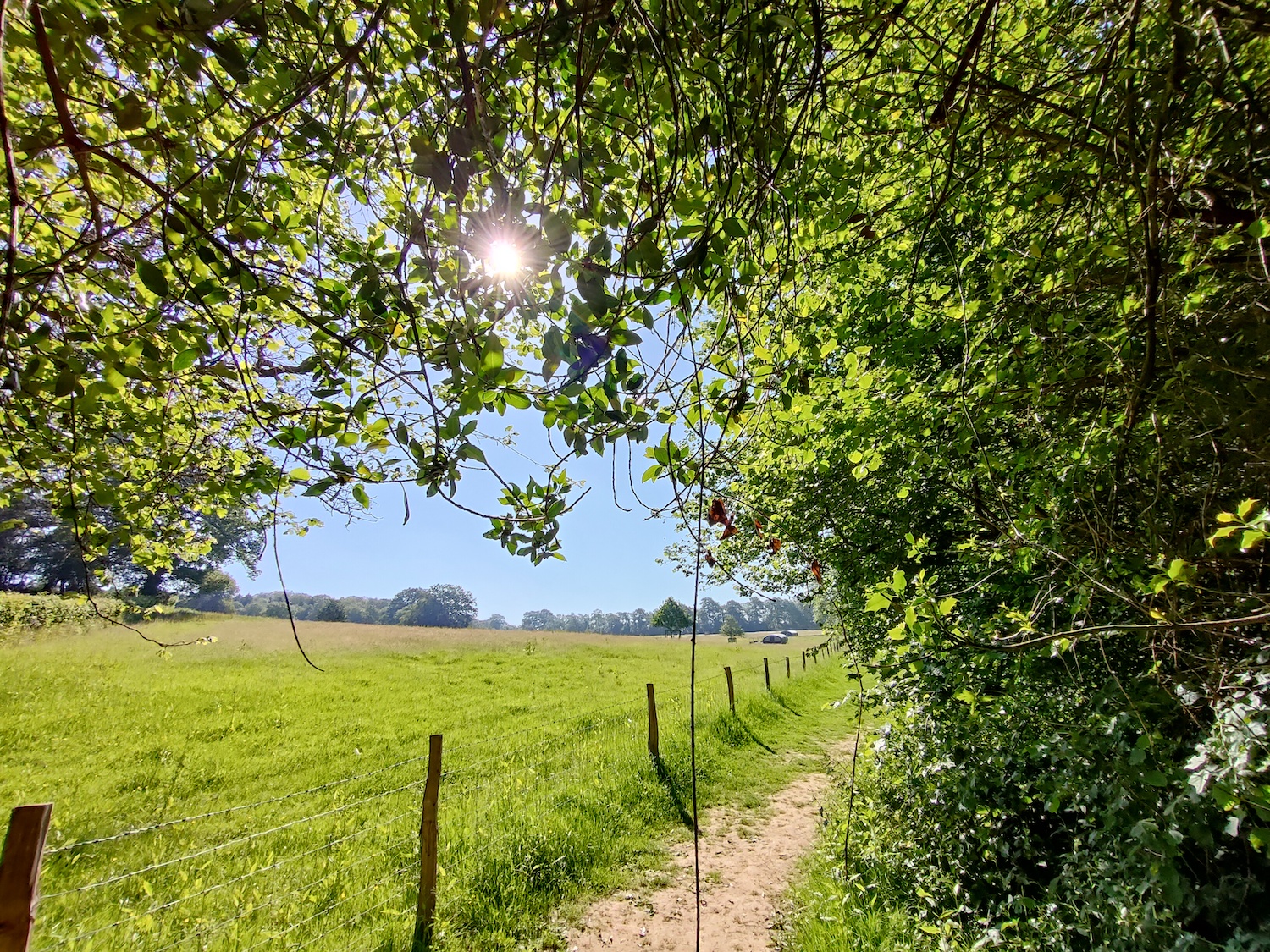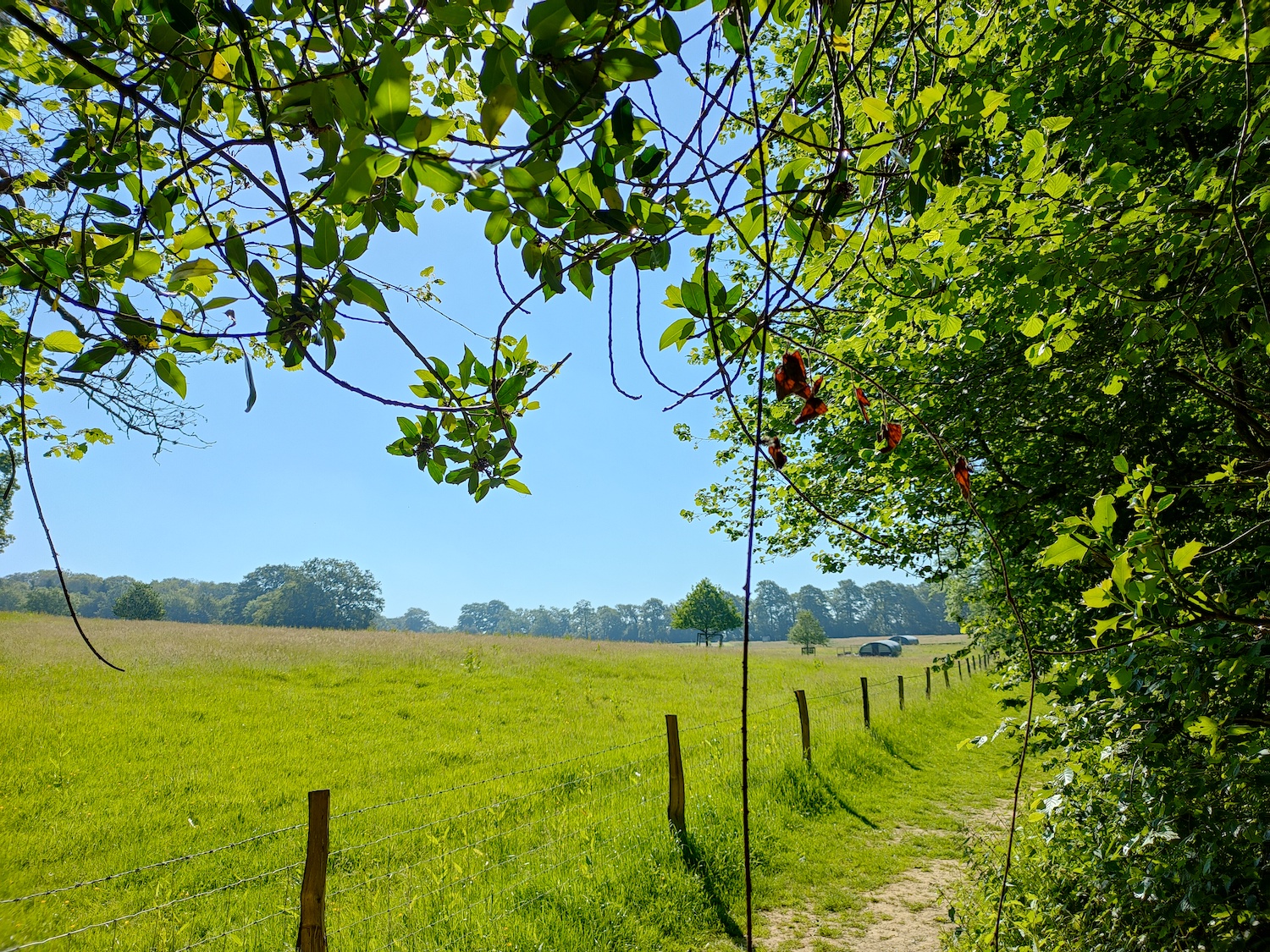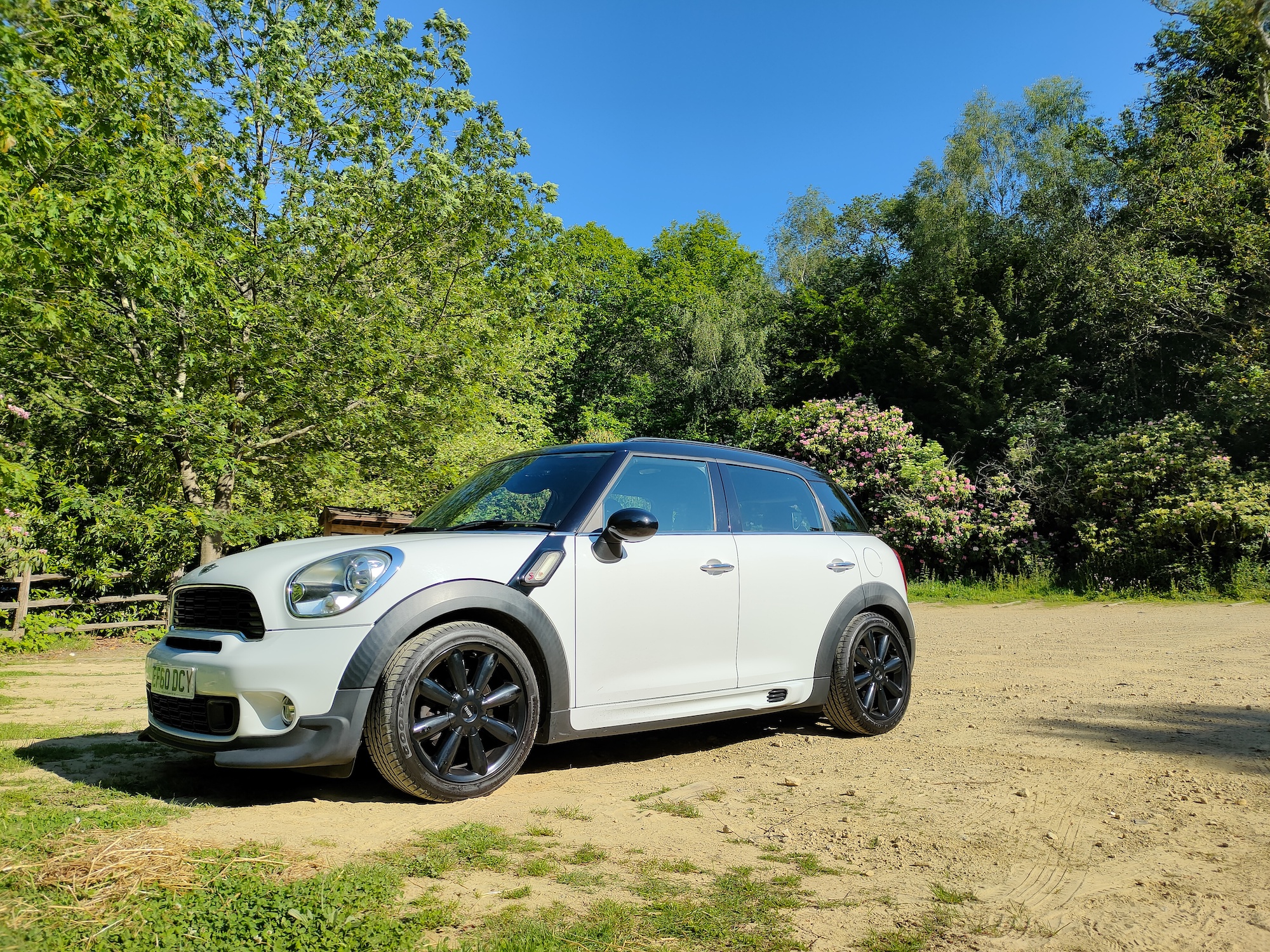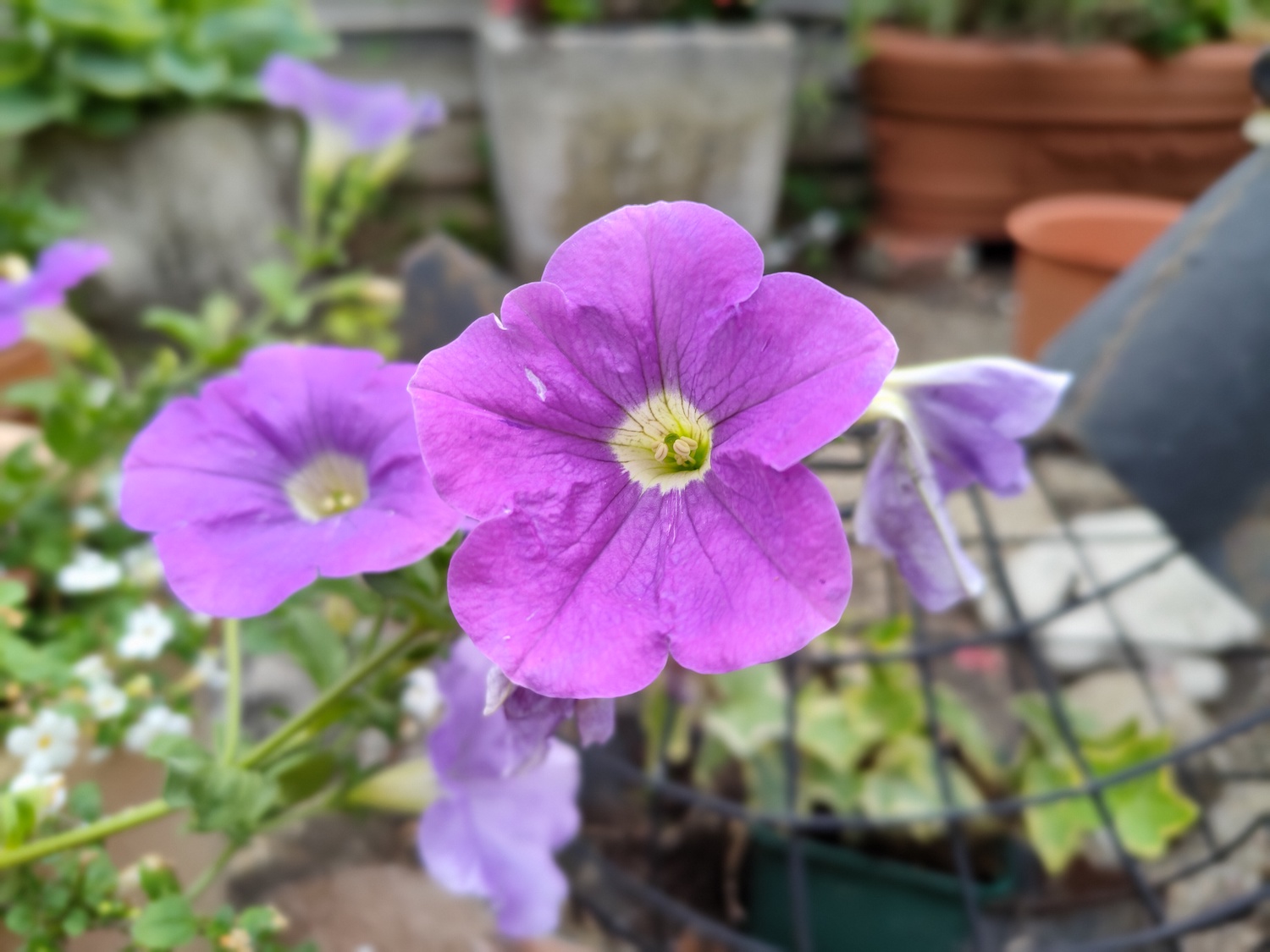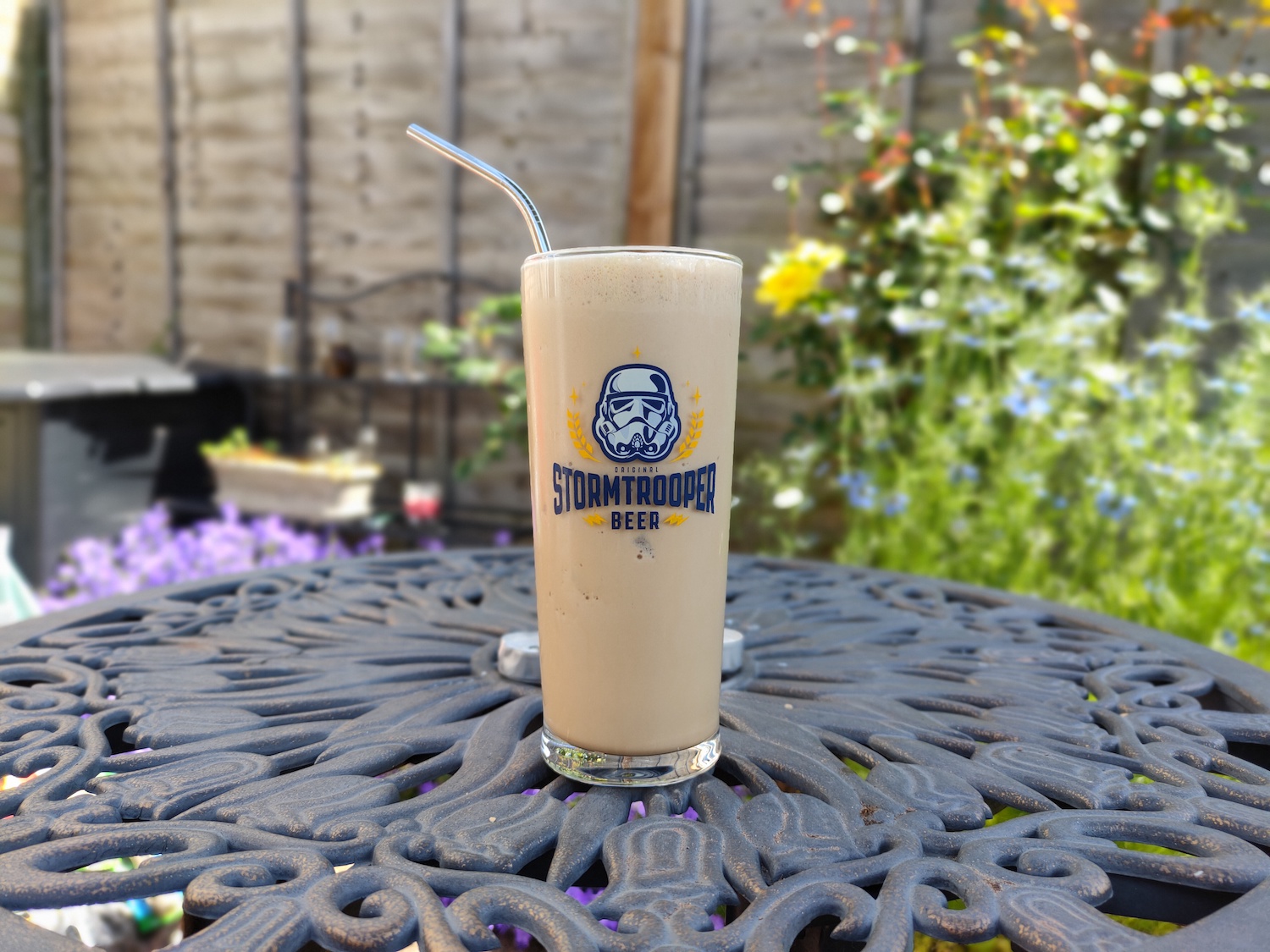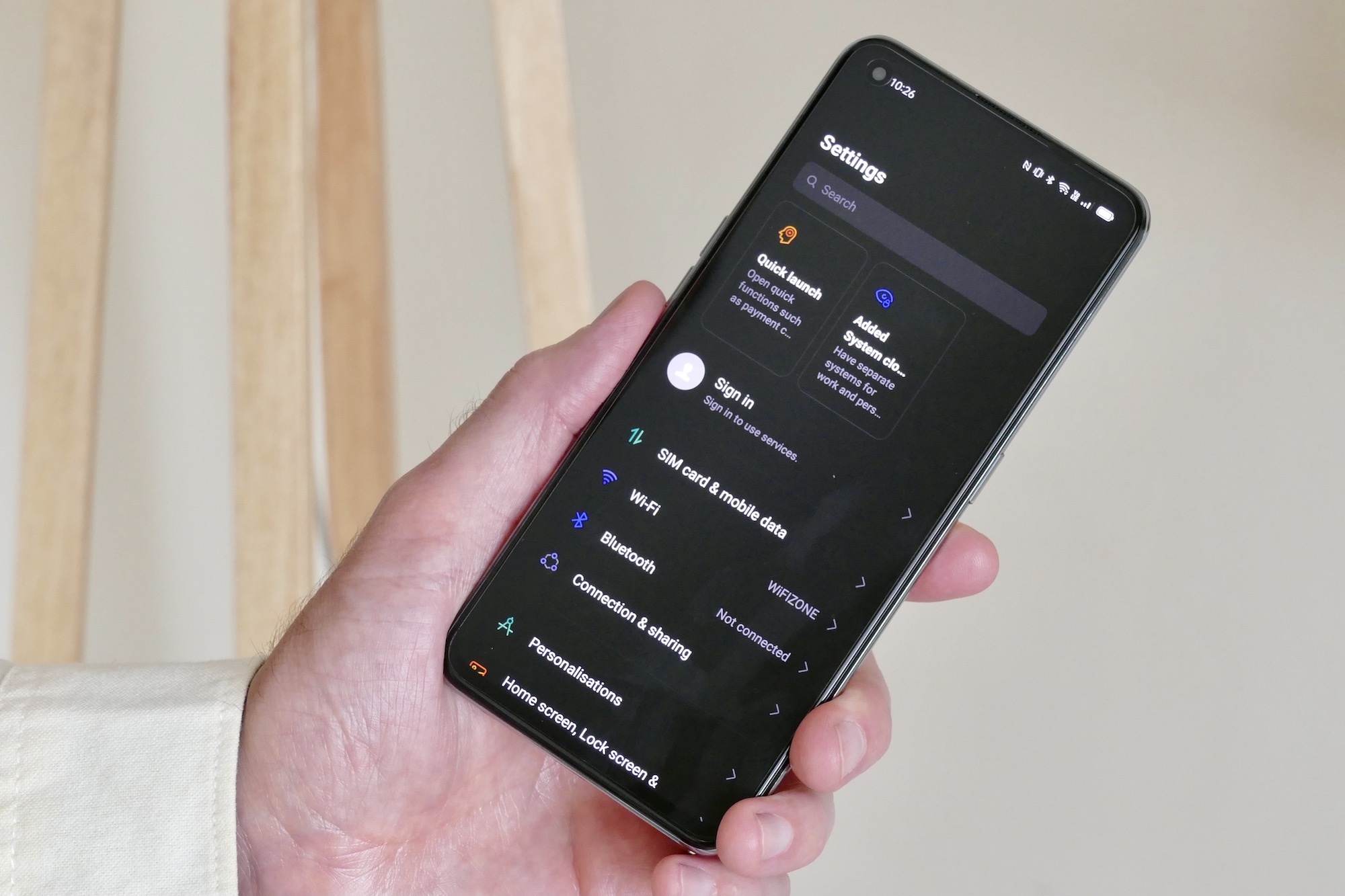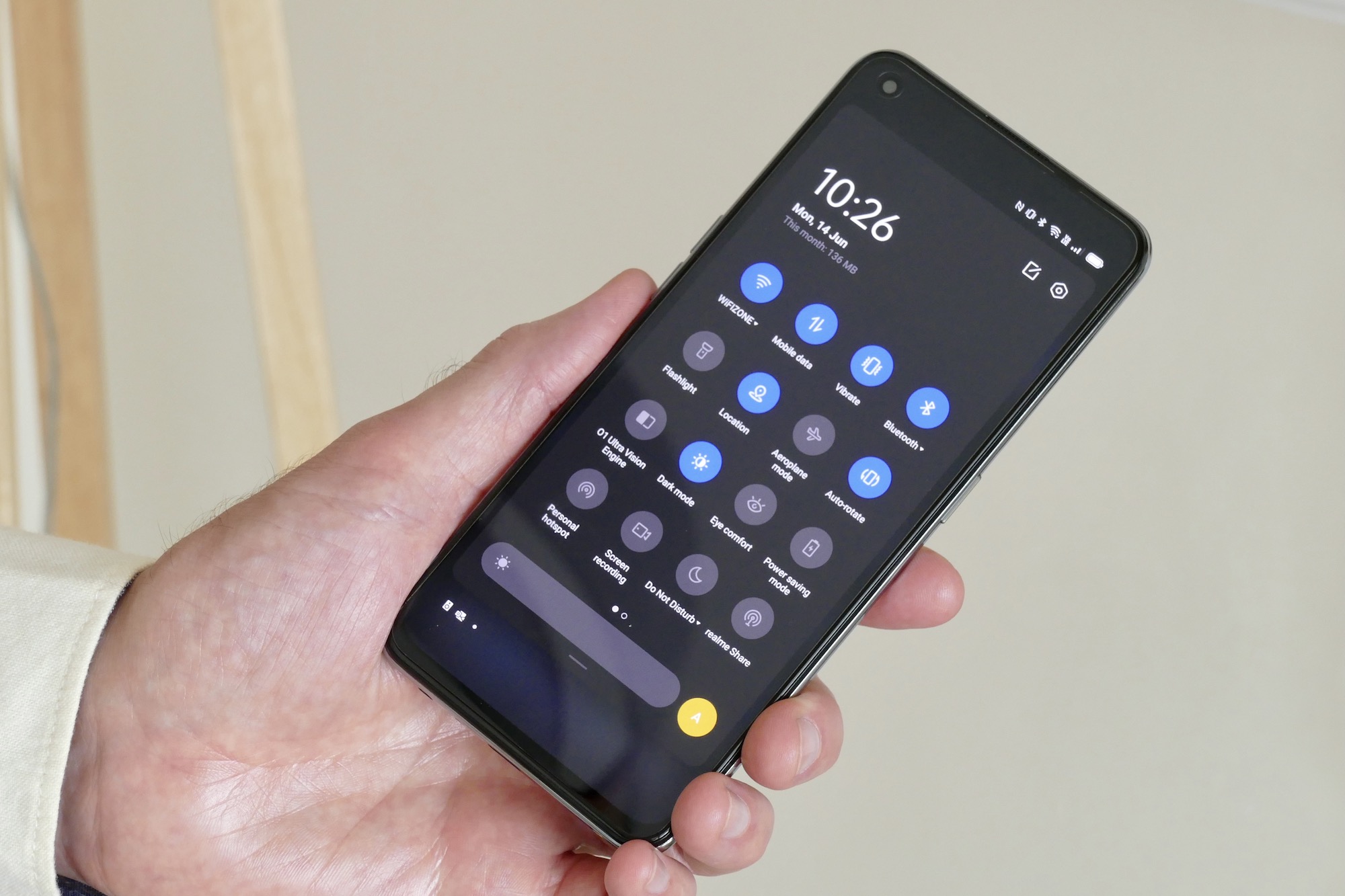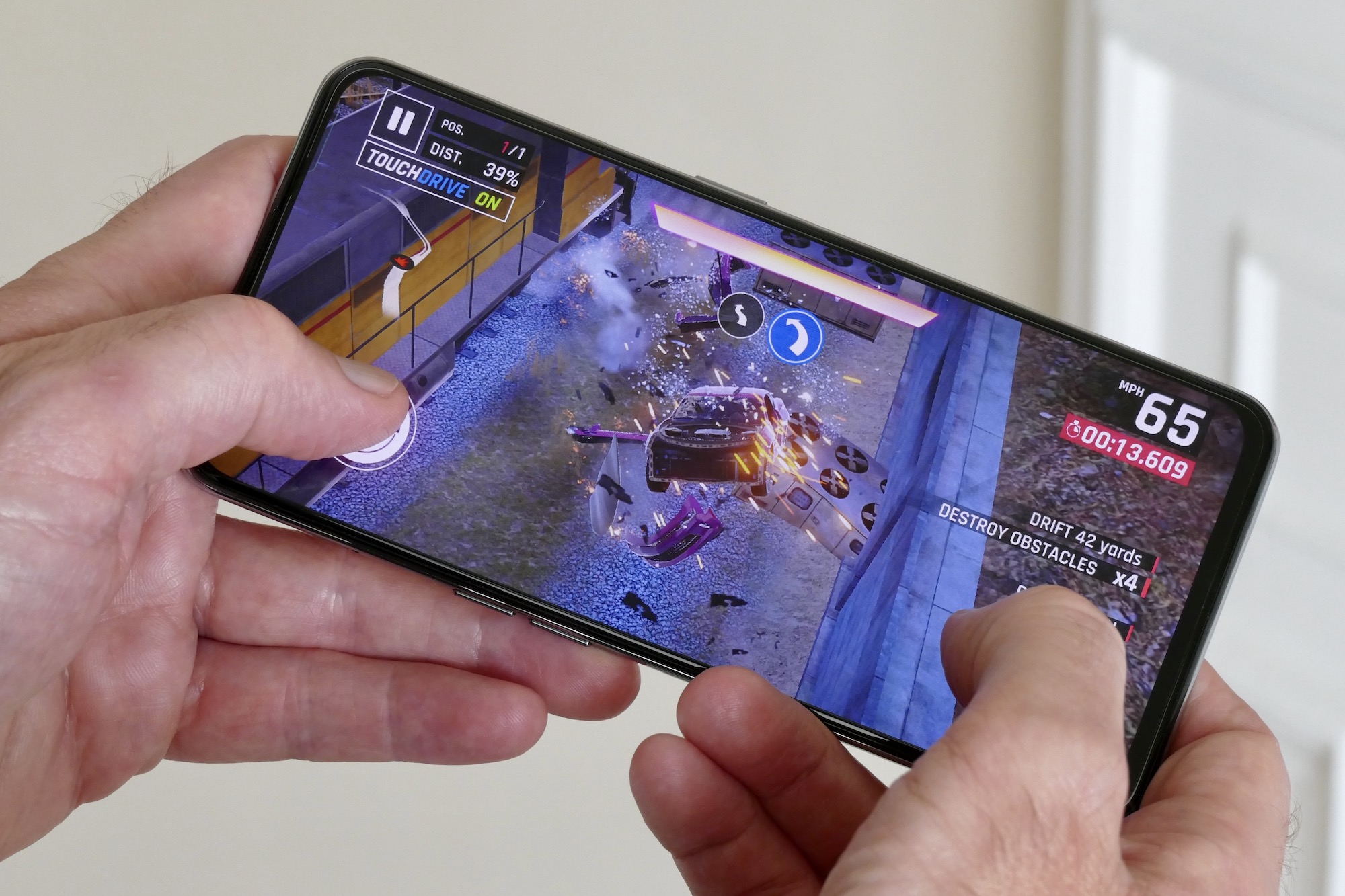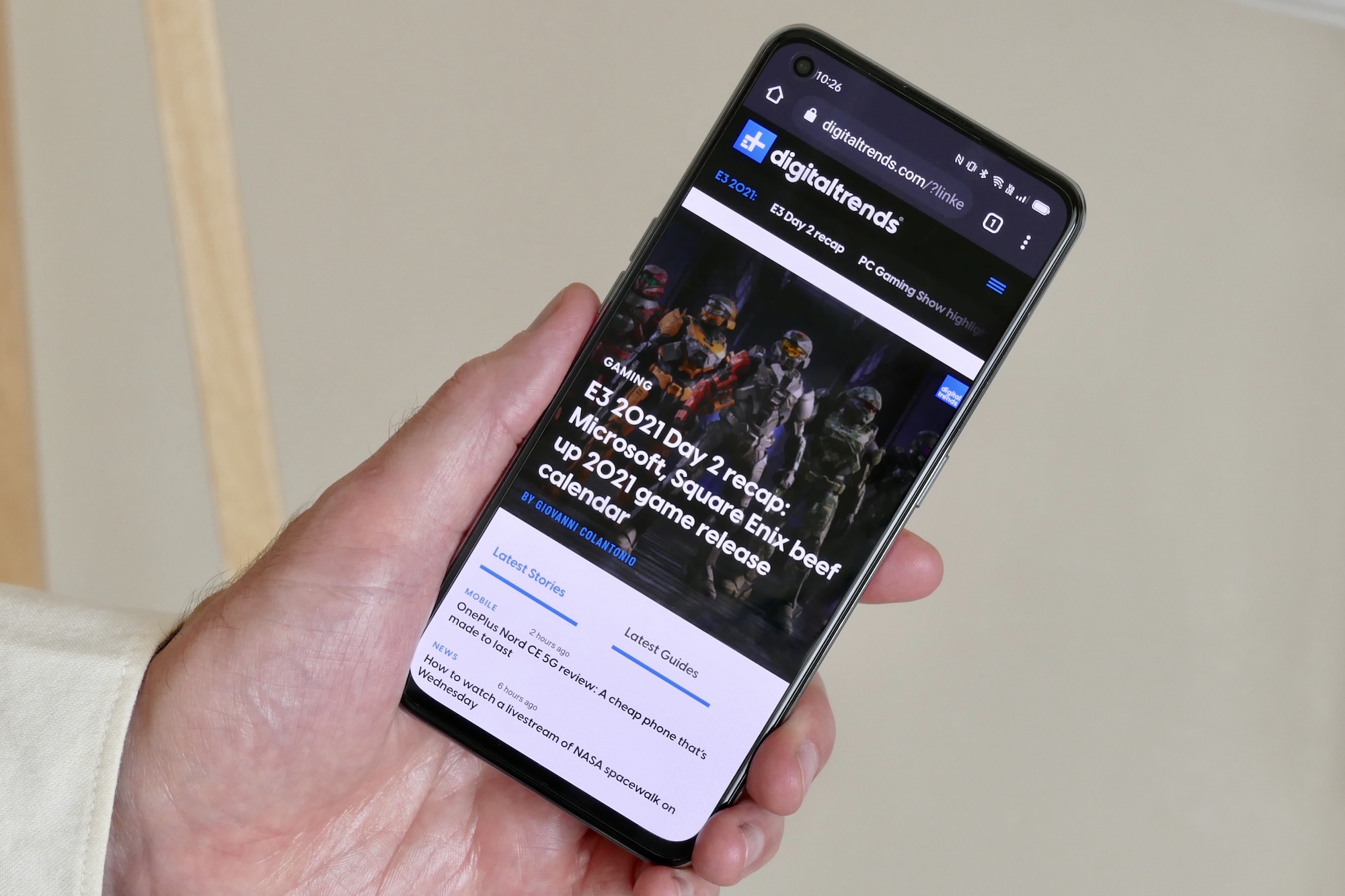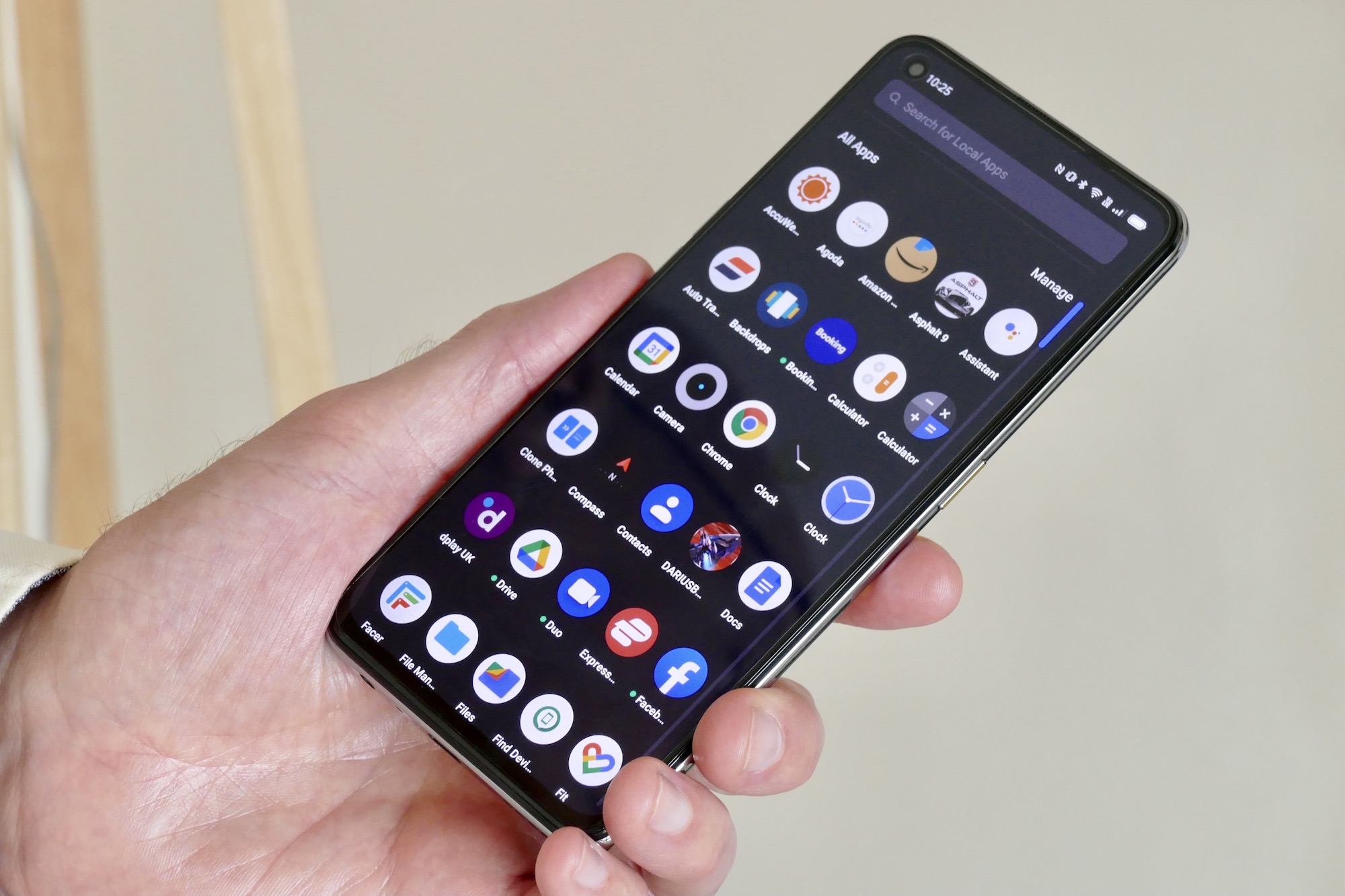“The Realme GT is a solid midrange smartphone with a flagship processor inside and a tempting low price. But don't expect it to compete with most other top-spec phones elsewhere.”
- Vegan leather model is eye-catching
- Snapdragon 888 chip performs excellently
- Compact and light
- Mediocre camera
- No water resistance
It’s impossible to ignore the yellow-and-black color scheme of the eye-catching Realme GT, as well as Realme’s repeated claims that the phone is a “flagship” because it uses the top Qualcomm Snapdragon 888 processor. But a phone needs more than a fast processor to impress, and while the phone’s other specs are good, they aren’t outstanding. The Realme GT has got the show and the go, but is that enough to make it a phone to buy?
Design
If Bumblebee used a smartphone, it would be the “Racing Yellow” Realme GT. The yellow vegan leather is softly textured and very pleasant to feel, and so far hasn’t gathered marks from either my sunscreen and moisturizer-covered hands, or from being placed in pockets and bags, indicating it will be durable. It’s matched to a strip of what looks like glass but could very well be plastic that runs down the left side of the rear panel and contains the camera module.
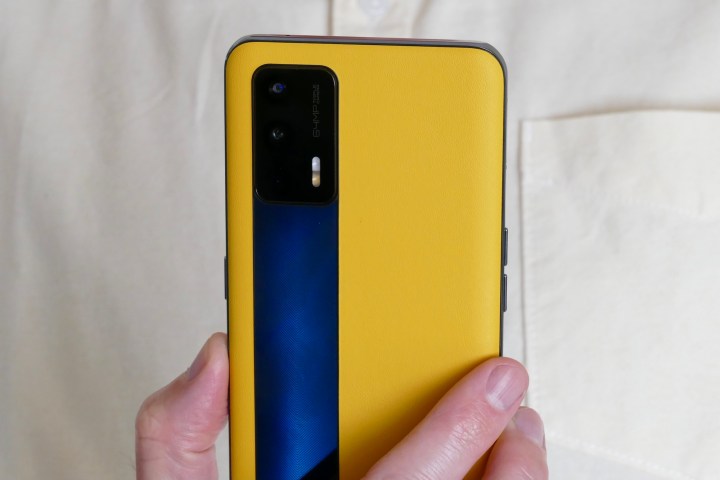
Initially, it appears to be jet black, but on closer examination, it has a very faint V-shape motif, complete with a slight blue hue, running down it. It’s actually a bit too faint, and would look better if it was more apparent more of the time. Lovely though I think the Realme GT looks, these two primary design features elevate it far beyond what it actually is — another rehash of the same Realme and Oppo phone design we’ve seen recently.
Paint the Realme GT black and it’ll look very, very similar to the Realme 8 5G, the Oppo A54 5G, and other phones released over the last few months. The lens layout may change inside the camera module a little, but on closer inspection, the crossover in Oppo and Realme’s phone design is painfully obvious. They are both part of the BBK Electronics empire, along with OnePlus, Vivo, and IQOO, but operate independently.
Does this diminish the GT’s appeal? Not really. If you’re going to reuse a dreary design, the best thing to do is obfuscate it in a crazy, in-your-face yellow-and-black color scheme. The Realme GT is pleasingly light at 186 grams and fairly thick at 9.1mm for the leather model, yet sensibly proportioned overall to make it easy to live with. A version where the vegan leather back is swapped with glass is also available.
Screen
The GT’s 6.43-inch Super AMOLED screen is a surprise. The 1080 x 2400 pixel resolution, lack of curves down the sides, and approximately 85% screen-to-body ratio aren’t the stuff of mobile dreams, so I wasn’t expecting anything special. For video, though, it’s very attractive indeed, and actually rivals the higher-resolution Fluid AMOLED screen on the OnePlus 9 Pro, even without the HDR10+ and massive levels of brightness.
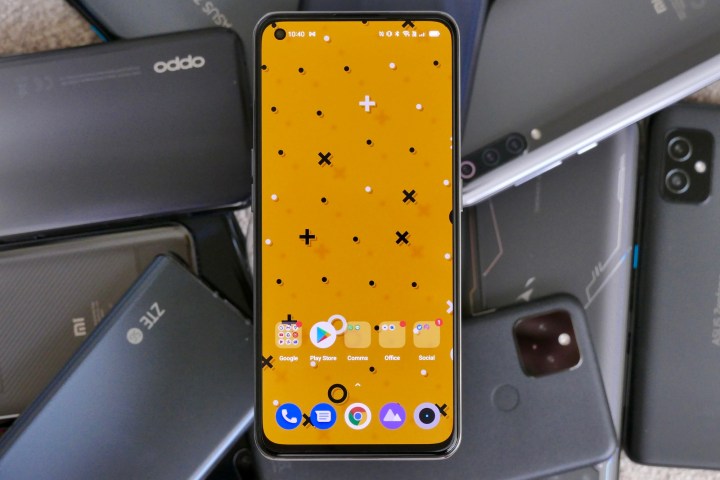
When watching Carfection’s Litchfield Toyota GR Yaris review on YouTube at 1440p, there’s nothing to distinguish them from one another. Compare it to the Apple iPhone 12 Pro, and the Apple phone’s more natural tones appeal over the default coolness of the Realme GT’s screen, but it really does manage to hold its own against these two display heavyweights in some ways.
The flatness doesn’t appeal to me. I prefer a screen with some shape to it and appreciate the way curved glass catches the light and feels in my hand. The GT lacks this and feels ordinary because of it. Outside of video, the Realme GT’s screen lacks vibrancy — even in Vivid mode — and the screen protector is low quality, attracting fingerprints and dulling the display when using the operating system generally. Back on the positive side, the 120Hz refresh rate makes scrolling incredibly smooth.

A fast and reliable fingerprint sensor is set at the bottom of the screen, but it has an annoying habit of not always activating when I pick up the phone or tap the screen to wake it. Face unlock using the selfie camera has usually worked before I get too frustrated with it, though. Audio is delivered through stereo speakers and is fine for casual use, plus the phone supports Dolby Atmos, but there’s not much depth to the sound from the phone.
Camera
There are three cameras inside the module on the back, a 64-megapixel Sony IMX682 main camera, an 8MP wide-angle camera, and a 2MP macro camera. In a hole-punch cutout at the top of the screen is a 16MP selfie camera. Realme calls the GT a flagship phone, but this isn’t a flagship camera setup. The IMX682 is used on the Samsung Galaxy A52 5G, for example.
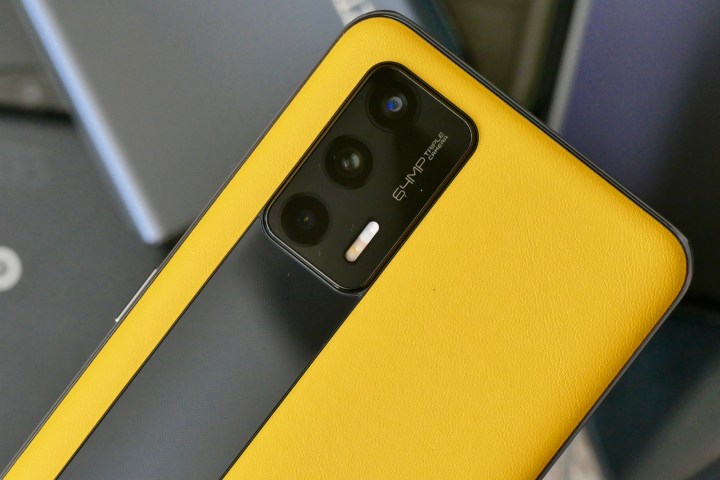
The camera is acceptable but inconsistent, and isn’t capable enough to take on the best cameras available on phones today. On its worst days, the main camera has a tendency to oversaturate and doesn’t always set the white balance correctly, while in more complex lighting conditions, it destroys the mood with dark shadows and a lack of detail. The wide-angle camera is where the inconsistency is found, mostly in the way it tunes colors.
When conditions are right for it, the Realme GT can take well-balanced, detailed photos that I’m happy to share with minimal editing. It seems to favor general photos of people, pets, and food, and struggled with scenes that required more nuance and skill to capture effectively. The selfie camera has a beauty mode active by default that smooths skin out considerably.
The camera app annoys me. Although the Realme GT doesn’t have an optical zoom feature, Realme adds a 2x and a 5x option for you to use in the camera app. Unsurprisingly, the photos aren’t very good. The 2x digital zoom can be passable, but the 5x is poor, and by providing it as an option, Realme confuses people about the camera’s actual ability, which will result in people ruining photos they rightly expected to turn out better.
A “flagship” camera needs to encourage you to take photos by producing jaw-dropping photos, which will boost your creativity and enjoyment. The Realme GT’s camera doesn’t have the overall ability or hardware to do this, which is unfortunate given the Snapdragon 888’s imaging prowess, but it’s fine for general, everyday use.
Performance and battery
The Realme GT’s flagship credentials come almost solely from the use of a Qualcomm Snapdragon 888 processor. The Snapdragon 888 chip is monstrously powerful, and I’ve had no problem playing Asphalt 9: Legends and Genshin Impact. Realme talks about an adaptive 360Hz touch sampling rate, but I didn’t notice any difference playing on the GT compared to other phones.

The Realme UI 2.0 software, based on Android 11, is almost identical to Oppo’s Color OS V11 software, to the point where you can select the same icon shape and size, plus the same font, to achieve exactly the same look, all from identical Settings pages. Both brands are part of the BBK Electronics empire, so this is no surprise, but don’t buy a Realme phone if you’ve used an Oppo phone and didn’t like the software.
The Snapdragon 888 chip is monstrously powerful/
Is it subpar? No, it’s fine, and does have a lot of customization options to make it your own if the visuals are unpleasant. I’ve found it’s reliable and fast, the Settings menu is logical enough, and notifications have been delivered mostly without a problem, although some apps don’t always notify of a new message until you unlock the phone. I do find the keyboard is set very low on the screen, which has led to more typing errors than usual.
Inside is a 4,500mAh battery, which has enough energy to almost last two days, but only under normal usage conditions. Make a video call and play some games, and the battery will be out of power by the middle of day two. It’s recharged using Realme’s 65-watt SuperDart Charge, which takes the battery to full in about 35 minutes, but it does not have wireless charging.
Price and availability
The Realme GT is available now in Europe and is coming soon to the U.K., but the only official prices avaiable are in euros at the moment. The phone costs 449 euros, which is about $550, for the 8GB/128GB version, or 599 euros/$725 for the 12GB/256GB model. It is currently not available to purchase directly through Realme’s U.K. online store, but can be found through Amazon in Europe, and as an import from sellers on AliExpress, where it starts at $480. If you decide to import the phone, make sure it’s the “Global” model, as otherwise it will not have Google Play or Google Services installed.
Our take
I’ve used the Realme GT every day for a few weeks now, and I haven’t had any real issues with it at all. People have commented on the striking yellow-and-black color scheme, and the battery has kept pace with my activities, but I haven’t really gelled with the phone. The problem is, outside of the vegan leather and yellow paint job, it’s not very exciting.
The camera and screen are satisfactory, but neither encourage me to use them, and certainly don’t offer anything over and above the competition. The Realme GT’s existence is based solely around the Snapdragon 888 processor and the performance it delivers.
While it’s a solid day-to-day phone, the rest of the specifications don’t take full advantage of the Snapdragon 888’s ability or what we have come to expect to accompany it, which is unfortunate. It also misses out on many other features we expect from a top-spec phone, including wireless charging, a great feature-rich camera, and water resistance. It certainly has got plenty of guts and gaming is great, so if power is all you’re after, the GT delivers it, and at a reasonable price. But the rest of the phone doesn’t live up to the promise of that monster processor.
Is there a better alternative?
The Realme GT’s unclear U.K. pricing and lack of official release in the U.S. makes a direct comparison difficult, but we’ll put it up against phones that cost less than $500. The Samsung Galaxy A52 5G doesn’t have the Snapdragon 888, but it does have a better camera and screen, plus long battery life and a pretty design. The software is also great, and it’s our recommended Android smartphone for this price. Similarly, the Google Pixel 4a beats the Realme GT’s camera and software, but can’t match its processor power.
Some less obvious competitors include the Asus Zenfone 8 and the Xiaomi Mi 11, both of which cost around the same as the Realme GT and provide similar specifications, but have drawbacks of their own.
How long will it last?
The Realme GT has 5G, so it’s ready to connect to the fastest mobile data service when you are, giving it a good start when it comes to longevity. The phone does not have water resistance, and aside from the leather back panel likely proving moderately more durable than the glass version, it’s not an especially tough phone either. It’s advisable to put it in a case.
Realme provides software updates for two years, but doesn’t go into detail about timing. Due to the custom interface over Android, it will take longer for major Android version updates to arrive than on a Google Pixel phone, for example. The Snapdragon 888 processor will help the phone last for two years at a minimum, though.
Should you buy it?
No, not unless your only requirement is to have the fastest Qualcomm processor for the cheapest possible price. There are better all-round performers available for a similar price.






